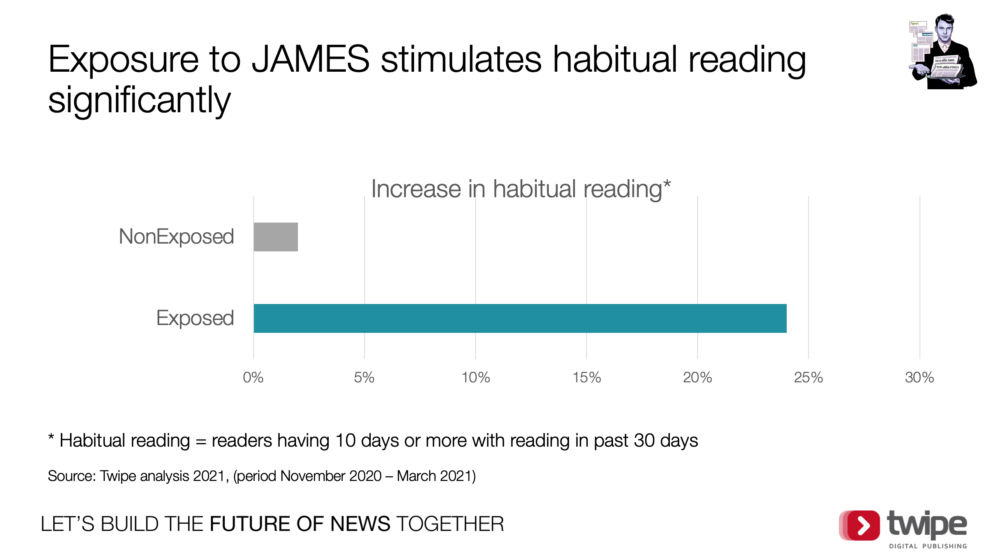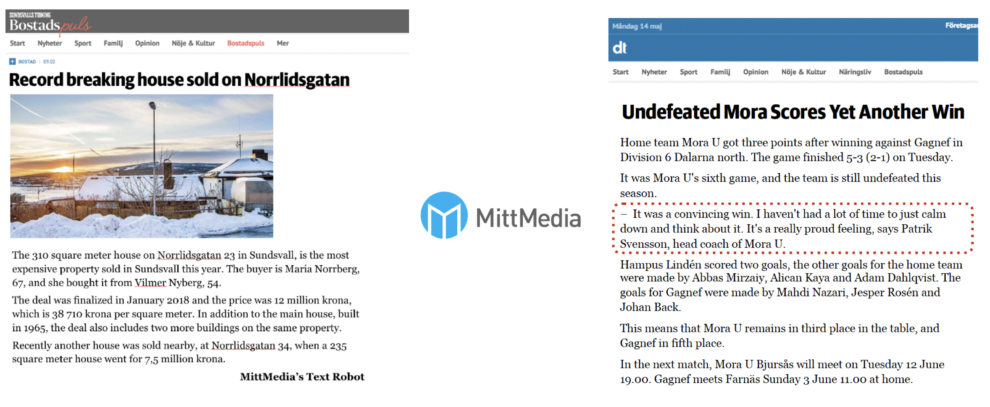In Reuters predictions published this January, 69% of media leaders and publishers bet on AI as the most important enabling technology for the future of journalism.
Publishers see AI as a way of delivering more personalised experiences and improving production efficiency. Automated recommendations, better commercial proposals and newsroom automation were the 3 most important uses of AI media for media leaders in 2020. But knowing that reader revenue and digital subscriber growth have become the main goal for publishers this year, how does AI contribute to this?
65% of publishers fear that the complexities of introducing AI will only further the divide between large and smaller publishers. Therefore today, we dive into some examples of AI used to drive subscriber growth at publishers which are not (yet!) part of the “million subscribers club”.
Showcasing the diversity of the daily content pool
Amongst the plethora of reasons people cancel a newspaper subscription, 70% are linked to ‘perceived low value’. This is a paradox for publishers considering the rich amount of content produced by newsrooms every single day.
The truth is that proving the value and relevance of the produced content has never been more difficult. This is in part due to the abundance of content on offer, but also due to channels such as mobile and web where we still need to learn how to help readers navigate content that they are happy to keep their subscription for.
One way of doing this is through personalisation AI. In our experience of creating personalised reading lists for newsletters with the JAMES AI technology, we saw that on average 80-90% of daily editorial content is exposed to subscribers.

This means that almost every article from the daily content pool ends up in at least one person’s newsletter. Surprisingly this finding did not come from the product or marketing teams that were working closely on the analysis. Instead, it came from the editorial team that noticed a much larger diversity of articles consumed via newsletters.
Surfacing relevant content drives habits
Through personalised reading lists, publishers have been able to surface relevant articles from the daily content pool for individual readers. This is crucial for ensuring publishers distribute the relevant article mix for every subscriber.
In the experiments we ran together with large and small publishers using JAMES, this selection is based on the JAMES Hybrid model. The model provides subscribers with a combination of the day’s main relevant stories and personalised content based on their reading habits. This has proved to be the most effective. It ensures that they receive their favourite news whilst not being subjected to filter bubbles.
In the Netherlands, NRC’s Middag newsletter, powered by JAMES, has stimulated habitual reading amongst exposed subscribers. 22% more readers have shown habitual reading behaviour after being exposed to JAMES newsletters. Tailoring a reader’s experience to see not just the news of the day but also the news that interests them is possible through AI.

Another interesting example of surfacing relevant content comes from The Globe and Mail and their own AI tool, Sophi. Sophi is used to drive digital subscriptions through personalisation and paywall management. Based on reader information and article content, Sophi decides whether articles should be placed behind a paywall or free to access for non-subscribers. The software also creates a personalised home page with the content which is most likely to be read by specific readers. All this enables the Globe and Mail’s journalists to find more time for finding and reporting stories.
When looking at edition reading, particularly valuable articles can also be identified. While many publishers keep their edition and web products separate, at regional publishers L’Avenir or Kölner Stadt Anzeiger, the teams are exploring ways to build bridges between the two products. This can help drive readers through the subscription funnel to ultimately guide them to convert to the edition products which have higher lifetime value.
One way they do this is with help of the EngageReaders algorithms developed by our teams at Twipe. EngageReaders is a technology uniquely focused on in depth edition analytics that identifies publishers’ daily “Hidden Gems” from the daily eEdition. These are then highlighted on the website, used in paywall strategies, or explored in follow up articles. If you want to explore how you can use EngageReaders, contact our team.
Automation allows journalists to focus on news
The use of AI has also been effective in automating newsroom tasks or even article writing with robot journalism. By cutting out menial tasks, publishers have made time for journalists to create quality content. There are, of course, great examples from large publishers like The Washington Post and New York Times, but who else has experimented with AI?
Svenska Dagbladet introduced AI to their newsroom in 2016. Concerned about the decline in readership, Editor in Chief Frederic Karen wanted to reduce time spent on non-journalism tasks. Once the editorial team finished their stories, they were required to give each article a “news value”. These values ranged from 1 to 5.
Alongside this, each article was also given a “lifetime value”, either short, medium or long. The ratings were then used by an algorithm which calculated an overall score, deciding which article was placed where. By automating these tasks, the team could shift their focus which gave them significantly better journalism.

The results for Svenska Dagbladet have been extremely successful and it still remains the second highest-read newspaper in Sweden.
The LA Times uses a robot-reporter to report on every homicide committed in Los Angeles. The robot has the ability to report a plethora of data, including the victim’s gender, race and cause of death.
MittMedia, Sweden’s leading local media company also have a robot journalist. “Homeowners bot“, their robot journalist, writes a short text about every house that is sold in their local markets. In doing this, Homeowners bot identifies an interesting angle for each house. This includes angles such as the most expensive house sold in the year, adding images from Google Streetview.

Buyer names are public information in Sweden therefore this is a fully automated process for homeowner bot. In its’ first four months of use, homeowners bot became the most productive “journalist” at MittMedia. It produced more than 10,000 articles! The robot also helped to convert hundreds of users into digital subscribers since its stories are number one in terms of behind-paywall page views.
Whilst some wildly out of the box experiments have taken place such as the AI News anchor in China, there’s still a lot of exploration to be done on how AI can help the future of journalism.
At Twipe we are fighting to make sure that AI is accessible to all publishers through our JAMES Launch Partner Programme. We are still looking for Launch Partners this year. Get in touch to find out more.
